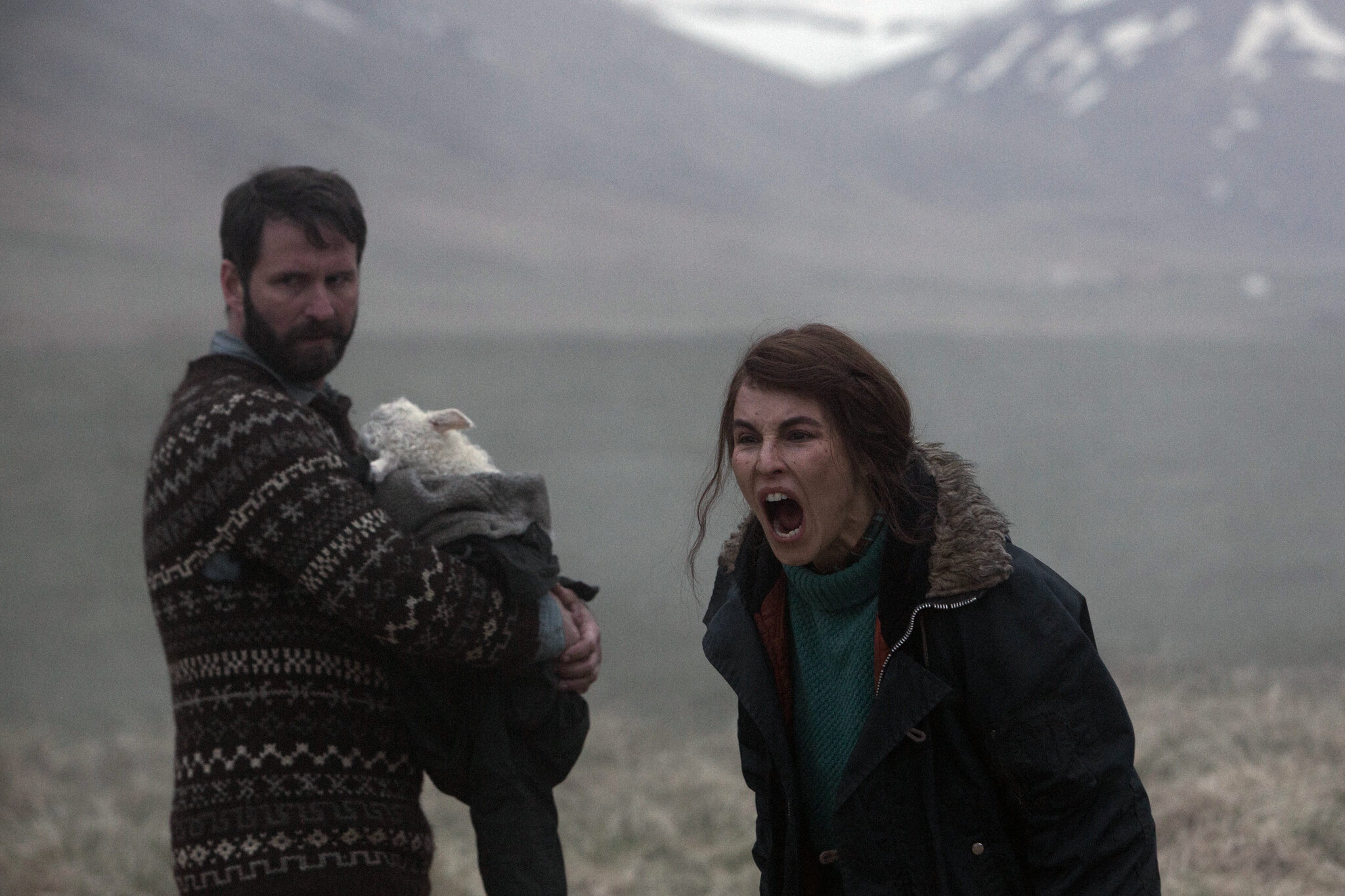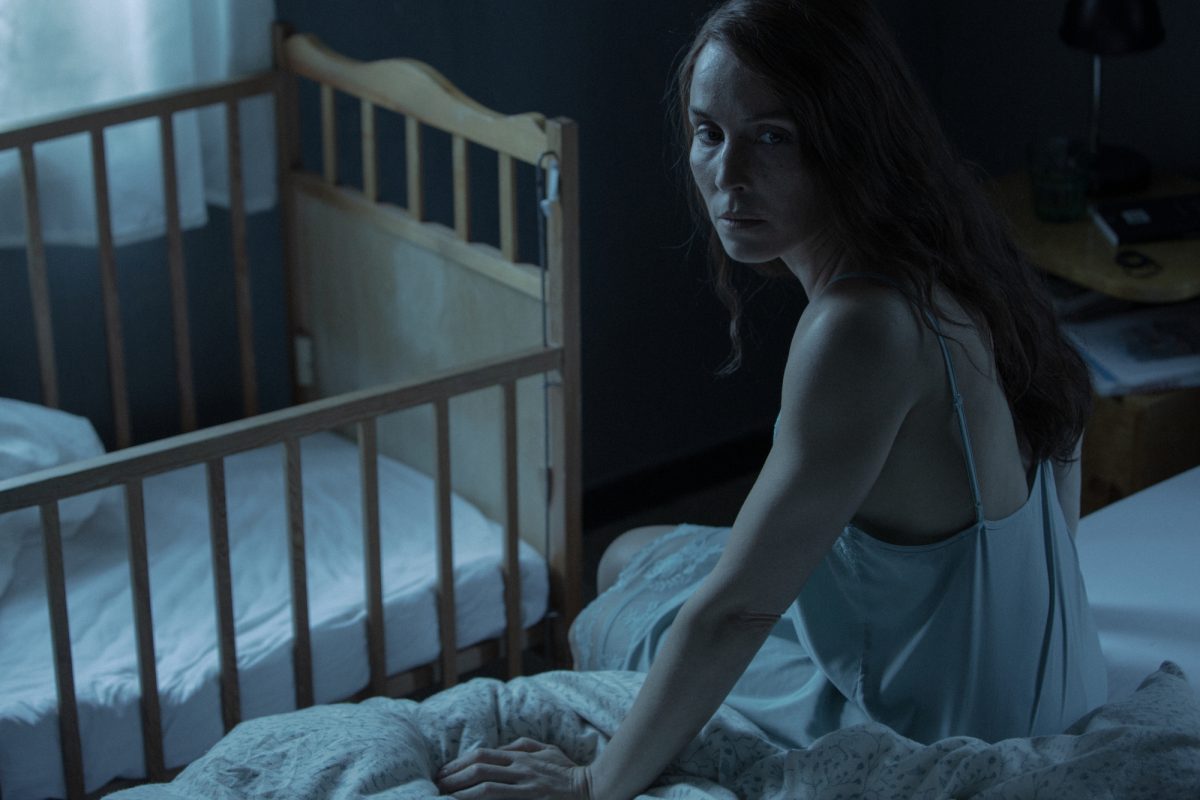After finishing the movie, my first instinct was to go back and watch the trailer, because my curiosity had been piqued – how do you market a movie like Lamb (Dyrid)?
The straight answer is, you do it as linearly as possible, because Vladimar Johannson’s film, marketed as “An A24 horror”, is both misleading as well as a branding experiment. An A24 horror film usually means gorgeous cinematography, portentous score, aspect ratio changes if required, and of course, the tonality that comes with a sprinkling of horror elements, along with some tendencies usually seen in arthouse movies like a slow burn treatment of the narrative.
Related to Lamb (Dyrid) – Adaptive Fidelity And Silence Of The Lambs
Lamb, directed by Vladimir Johannson, working with a script co-written by Sjon has all of those elements. Shot in the beautiful and lush landscapes of mountainous rural Iceland, Lamb opens with a long tracking shot following a group of wild horses in the snow, before zeroing in on the farm owned by the central couple of the story Maria and Ingvar, played by Noomi Rapace and Hilmir Snaer Guomason respectively. The movie takes its sweet time in showing the life of this couple – a relatively undisturbed and simple life, where the only source of excitement is the birthing of baby lambs from the womb of an adult ewe. The process of pulling the lambs out of the hind region of the ewe is the first time we see the semblance of gore and blood in an otherwise mostly cold and bloodless movie, so far.
The structuring of the movie so far resembles that of a slow burn, except a slow burn usually has events of interest occurring, either in the background, or slowly simmering itself and later coming to the foreground. None of that happens in Lamb. The titular Lamb, which becomes the source of joy for the couple and the reason for the narrative’s existence, comes into focus at least 40 mins in, and even then Johansson takes great pain in hiding the uniqueness of said lamb, instead choosing to focus on the interactions between Ingvar and Maria to drive home the point – something is different. It is 45 mins in, when the lamb, finally beckoned by its actual mother, escapes from the human sized crib in the couple’s bedroom – that we finally see what Johannson’s hook of the story is.
The existence of this titular lamb, as a lamb with a human body, and one human hand is definitely a point for the kooky nature of the material. What Lamb and its writers do, is double down on that revelation. The couple treats this lamb like a normal human child, to the chagrin of the recently arrived Petur, Ingvar’s brother. Petur’s reaction when he sees that lamb, now wearing a human sweater, and holding its “mother’s” hand, is one of surprise, bemusement, and finally when Ingvar and he are alone, a resounding “What the fuck is this?”, almost mirroring the audience’s reaction of watching the movie.
Also, Read – THE KILLING OF A SACRED DEER [2017]: REVENGE IS A DISH BEST SERVED TWISTED
Petur’s reaction resonated in my head throughout the movie’s runtime, as Lamb increasingly leans heavily into playing the events occurring as completely straight, which only heightens the absurdist comedy of the situation. The little lamb, now named Ada, is a cute thing to look at, and the way it manages to win over Petur’s heart too is heartwarming. But for the entirety of the movie, Lamb’s storytelling comes off as very simplistic, conceptually underdeveloped.
The portentous tone, along with the mostly muted color palette, gives off a far important and deeper meaning of the underlying material than what actually exists in the story. On its surface it is a story about a childless couple, coping with this gap in their family life. It feels far more of a fable than a horror movie, an absurdist comedy than horror, and that is precisely one of the biggest issues with Lamb, the movie as a whole. It doesn’t know what it wants to be, and even if it tried to be anyone genre – be it a weird family dynamic heavy drama, or a unique high fantasy fable, none of these elements feel successfully developed, or worked on at the script level, much less in the final motion picture.
It is a shame, because if we take it as an absurdist drama, the actors’ commitment to the bit is praiseworthy. Noomi Rapace is fantastic and the only reason to actually watch this movie. Her acting prowess gives the character of Maria far more layers than the material given to her. The cinematography is jaw-dropping, with wide shots of green lush valleys, or foggy mountaintops giving a warm yet isolationist feel to the story; as if it is removed from the current reality.
The payoff at the end is queer to say the least. It doesn’t come out of nowhere, but is clearly foreshadowed as the movie is reaching its conclusion. But how Lamb ends is a big problem for me as a viewer, because the ending of this narrative with this sudden burst of abruptness, suddenly opens itself up to a whole new world, reinforcing the fable-like nature of the story. As the ending events occur, my mind starts to race, and I start to wonder for the movie that Lamb could have been, instead of the movie that Lamb ultimately became. A curious odd misfire by a24, coasting on the famous “a24 vibes”, but little else in terms of depth or themes.
★★½
Trailer
Lamb (Dyrid) Links – IMDb, Rotten Tomatoes
Lamb (Dyrid) Cast – Noomi Rapace, Hilmir Snær Guðnason, Björn Hlynur Haraldsson







![Solo: A Star Wars Story [2018] Review – Safe. Superficial. Substandard.](https://79468c92.delivery.rocketcdn.me/wp-content/uploads/2018/10/solo-screenshot-1-768x512.jpg)
![Dhuin [2022]: ‘MAMI’ Review – Placid and ruthless in the same breath](https://79468c92.delivery.rocketcdn.me/wp-content/uploads/2022/02/Duin-Movie-2022-Achal-Mishra-768x432.jpg)
![Not Going Quietly [2021]: ‘Tribeca’ Review : A searing look at the power of activism moulded by personal suffering.](https://79468c92.delivery.rocketcdn.me/wp-content/uploads/2021/06/Not-Going-Quietly-Tribeca-highonfilms-1-768x432.png)
![Harpoon [2019]: ‘Fantasia’ Review – A self-aware Boat-Movie](https://79468c92.delivery.rocketcdn.me/wp-content/uploads/2019/07/Harpoon-highonfilms2-768x432.jpg)
![White Snake [2019]: ‘NYAFF’ Review – A Fable Told with Breathtaking Animation](https://79468c92.delivery.rocketcdn.me/wp-content/uploads/2019/07/White-Snake-highonfilms-768x432.jpg)
![The Atlantic City Story [2020]: ‘IFFI’ Review – A muted character-drama about understanding the aimlessness of existence](https://79468c92.delivery.rocketcdn.me/wp-content/uploads/2021/01/The-Atlantic-City-Story-highonfilms-1-768x432.jpg)